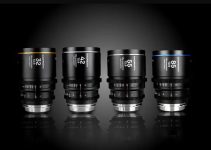Even though it’s far from perfect, this simple technique can be utilized on particular occasions when you’re in a pinch and don’t have access to any dedicated third-party plugins or After Effects to apply more advanced noise reduction.
As Kurt Anderson the author of this tutorial suggests, you should use this option as a last resort to mitigate the visible digital noise in your footage.
Nevertheless, you still can get some decent results depending on the level and complexity of the artifacts you want to reduce. So, without further ado, let’s dive into the actual Premiere Pro CC noise reduction workflow in the video below.
Since the most problematic part of your video is its shadow areas, Kurt recommends applying the noise reduction tools and targeting the visible noise only in these specific parts of the image. There are two main tools you can use in Premiere Pro CC – Dust and Scratches and Median located under the Noise and Grain filters in the Effects Library.
In this particular case, the video showcases a workflow regarding the second option. Once you drag and drop the Median filter onto your clip, you’ll be able to create multiple masks and place them on the most distracting areas of your footage. To give the masks a wider range, set the Feather option to 100 and then adjust the Radius to 5. These settings should give you a good starting point as you can tweak them further along the way.
Just as any other mask created in Premiere Pro CC, you can also track them so that they can adhere to the part of the image that you want to improve. Once you set up the mask and apply the settings, play back the clip and see the results in real-time. Keep in mind, though, the Median effect typically removes detail from the shot by blurring it, so be careful with the amount that you apply. The usage of this filter can be also beneficial in situations when you want to deal with moire and aliasing artifacts.
If this workflow still doesn’t produce the results that you’re looking for, then you should probably try out some of the paid third party plugins such as the Neat Video or Red Giant’s Denoiser III that will certainly do a better job and deliver more professional results. Either way, there’s nothing wrong to see what you can get with the provided assets of Premiere Pro CC that you have at your disposal anyway.
[source: AdobeMasters]
Disclaimer: As an Amazon Associate partner and participant in B&H and Adorama Affiliate programmes, we earn a small comission from each purchase made through the affiliate links listed above at no additional cost to you.



